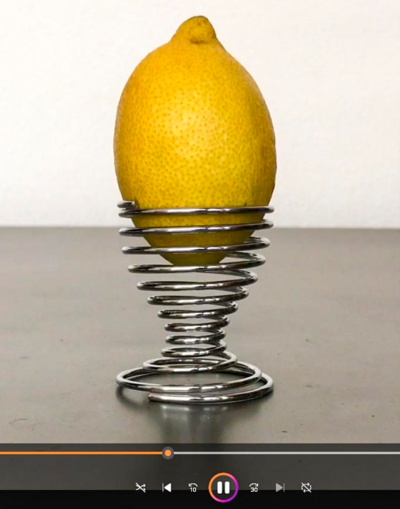Welcome at the Interface Culture program website.
Acting as creative artists and researchers, students learn how to advance the state of the art of current interface technologies and applications. Through interdisciplinary research and team work, they also develop new aspects of interface design including its cultural and social applications. The themes elaborated under the Master's programme in relation to interactive technologies include Interactive Environments, Interactive Art, Ubiquitous Computing, game design, VR and MR environments, Sound Art, Media Art, Web-Art, Software Art, HCI research and interaction design.

The Interface Culture program at the Linz University of Arts Department of Media was founded in 2004 by Christa Sommerer and Laurent Mignonneau. The program teaches students of human-machine interaction to develop innovative interfaces that harness new interface technologies at the confluence of art, research, application and design, and to investigate the cultural and social possibilities of implementing them.
The term "interface" is omnipresent nowadays. Basically, it describes an intersection or linkage between different computer systems that makes use of hardware components and software programs to enable the exchange and transmission of digital information via communications protocols.
However, an interface also describes the hook-up between human and machine, whereby the human qua user undertakes interaction as a means of operating and influencing the software and hardware components of a digital system. An interface thus enables human beings to communicate with digital technologies as well as to generate, receive and exchange data. Examples of interfaces in very widespread use are the mouse-keyboard interface and graphical user interfaces (i.e. desktop metaphors). In recent years, though, we have witnessed rapid developments in the direction of more intuitive and more seamless interface designs; the fields of research that have emerged include ubiquitous computing, intelligent environments, tangible user interfaces, auditory interfaces, VR-based and MR-based interaction, multi-modal interaction (camera-based interaction, voice-driven interaction, gesture-based interaction), robotic interfaces, natural interfaces and artistic and metaphoric interfaces.
Artists in the field of interactive art have been conducting research on human-machine interaction for a number of years now. By means of artistic, intuitive, conceptual, social and critical forms of interaction design, they have shown how digital processes can become essential elements of the artistic process.
Ars Electronica and in particular the Prix Ars Electronica's Interactive Art category launched in 1991 has had a powerful impact on this dialog and played an active role in promoting ongoing development in this field of research.
The Interface Cultures program is based upon this know-how. It is an artistic-scientific course of study to give budding media artists and media theoreticians solid training in creative and innovative interface design. Artistic design in these areas includes interactive art, netart, software art, robotic art, soundart, noiseart, games & storytelling and mobile art, as well as new hybrid fields like genetic art, bioart, spaceart and nanoart.
It is precisely this combination of technical know-how, interdisciplinary research and a creative artistic-scientific approach to a task that makes it possible to develop new, creative interfaces that engender progressive and innovative artistic-creative applications for media art, media design, media research and communication.
Andrea van der Straeten: Nervöses Archiv
Midissage: 1. Mai 2025, 14.00 Uhr; Ausstellung bis 11. Mai 2025 Prevenhuberhaus, Marktplatz 6, 3335 Weyer,
Künstlerinnengespräch und Führung durch die Ausstellung mit Andrea van der Straeten
Finissage: 11. Mai 2025, 15.00 Uhr
Leseperformance Julius Deutschbauer
Andrea van der Straeten (geb. 1953 in Trier, lebt in Wien) arbeitet als konzeptuelle Künstlerin mit unterschiedlichen Medien, Materialien und Techniken. Dabei werden in einer experimentellen Vorgangsweise in einzelnen Arbeiten oder Werkgruppen die Grenzen zwischen Gattungen wie Fotografie und Grafik, Standbild und Bewegtbild, Sound und Musik .... ausgelotet und zunehmend verwischt oder aufgehoben. Künstlerisches Arbeiten ist für van der Straeten ein ästhetischer, reflexiver, technischer und kommunikativer Prozess, in den sie mitunter Kolleginnen und Kollegen zur Teilnahme auch einlädt.
Ihre Ausstellung führt in der Galerie im Erdgeschoß und in zwei Räumen im oberen Stock Arbeiten von den 1990er Jahren bis heute zusammen, ohne dabei einen retrospektiven Anspruch zu stellen. Vielmehr lässt die Zusammenstellung formal unterschiedlicher Werke einen Parcours entstehen, in dessen Verlauf die einzelnen Exponate in einen Bezug zueinander treten und anfangen „miteinander zu sprechen“ – mit und ohne Worte, manchmal beides zugleich. Reine Bildsprache wie auch gedruckte, gestanzte, gesprochene Sprache machen auf unterschiedliche Weise darauf aufmerksam wie wir – Menschen, Tiere, Pflanzen – in Kontakt treten und uns äußern.
https://www.prevenhuberhaus.at/van-der-straeten
